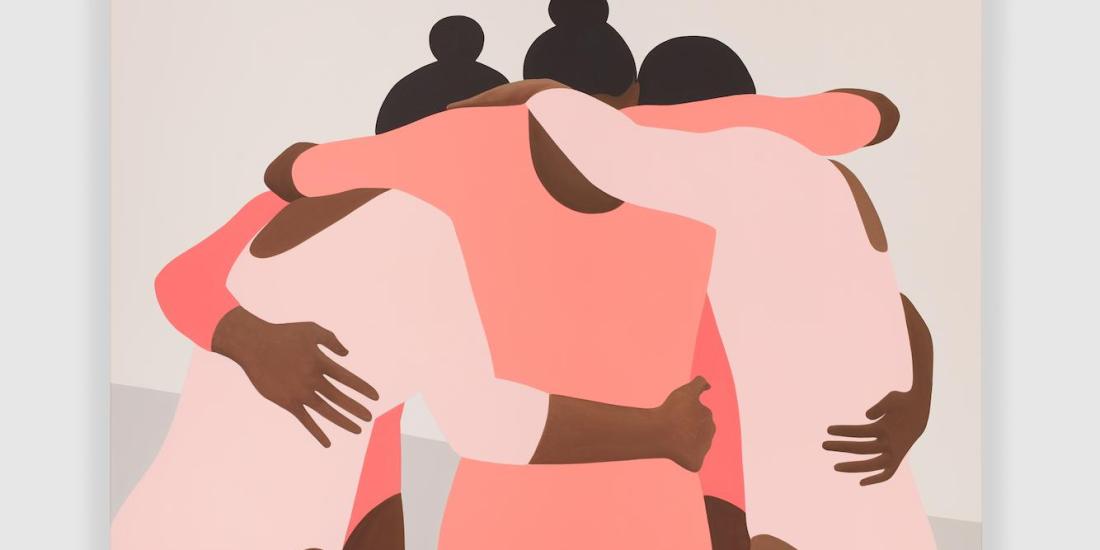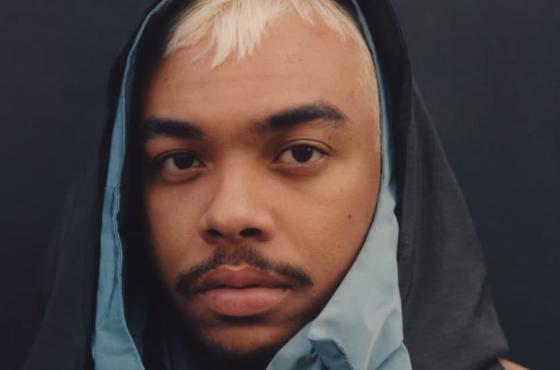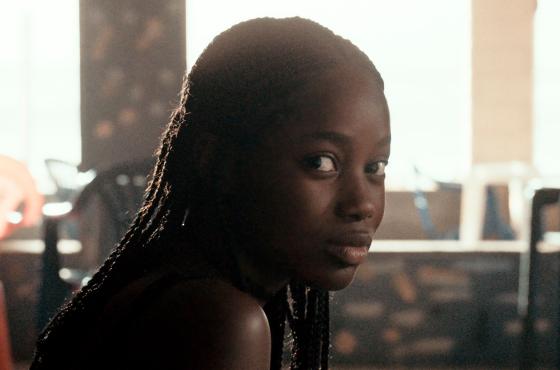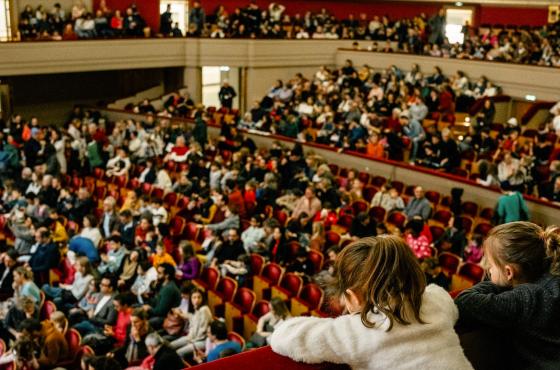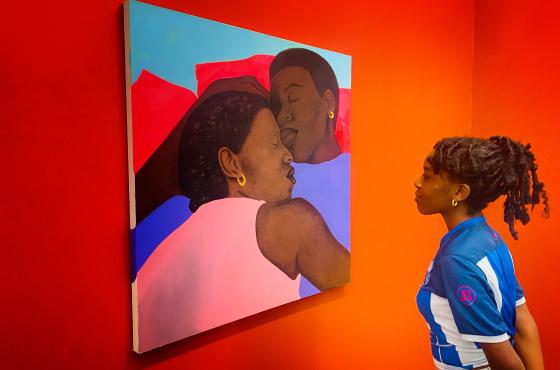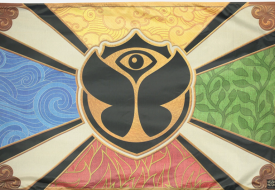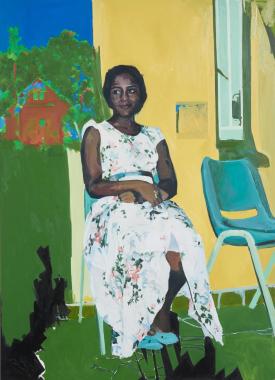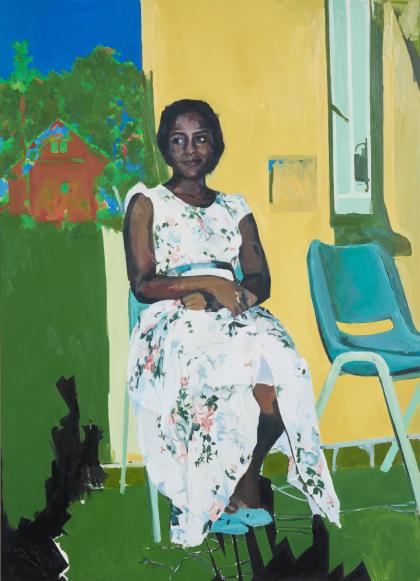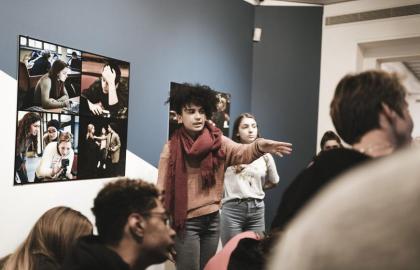‘When I think of When We See Us, I see… black joy. The political power of black happiness. I see black emancipation and the victory over oppression.’ This is how curator Koyo Kouoh - who has been appointed with the specific task of curating the Biennale Arte in 2026 in Venice - summarizes the exhibition in a nutshell. Black joy runs like a common thread through the exhibition, in which paintings are grouped together thematically. It brings you from ‘The Everyday’ to the sections ‘Repose’, ‘Triumph & Emancipation’, ‘Sensuality’ and ‘Spirituality’ to ‘Joy & Revelry. You rarely see such a large number of people laughing while walking through an exhibition. Joy is infectious.
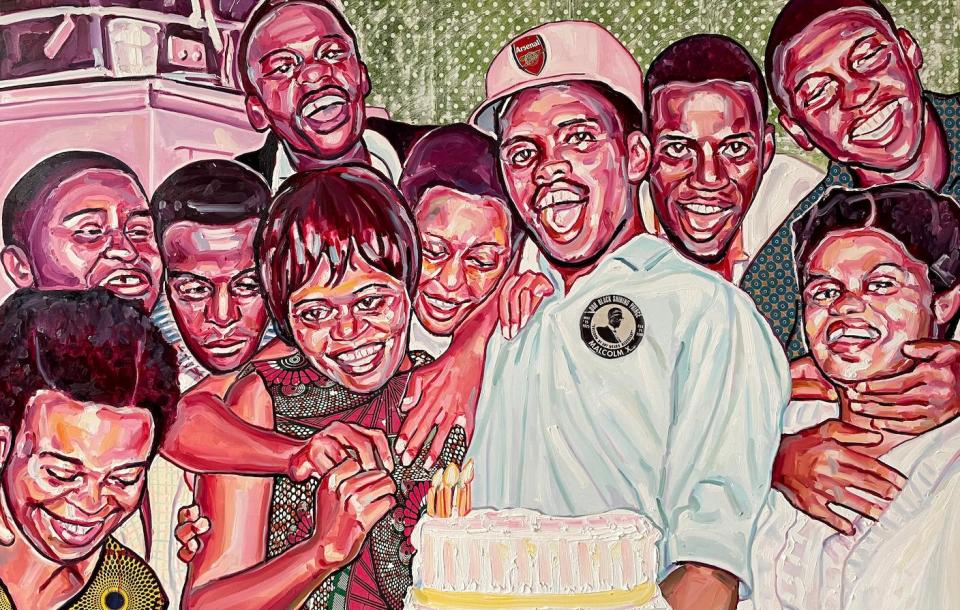
Happy Birthday
The research for When We See Us was conducted during the peak of the coronavirus pandemic. From the beginning, it was clear that the focus would be on everyday things that bring joy: cooking, eating, drinking, talking, making music, dancing, having sex, celebrating, enjoying one’s body and that of others, or just doing nothing. ‘Refusing the gaze’: this is how Koyo Kouoh describes it. Because when it comes to people of colour in the 20th and early 21st centuries, the camera all too quickly homes in on violence and pain. In recent years, this has assuredly come from a place of outrage too. Black Lives Matter! So what and who do you see? Above all the legacy with which other continents have saddled Africa, the consequences of slavery, apartheid and colonialism. Koyo Kouoh has found that these dead-end streets are ineffective when it comes to self-representation. Joy is the most effective weapon when it comes to breaking the spell of the outsider’s gaze. ‘Black Art Matters!’ is proudly displayed on Koyo Kouoh’s t-shirt.
‘I want to show the everyday,’ says Esiri Erheriene-Essi, one of the selected artists, ‘not the battle, the suffering or the colonial trauma. I want to show what it means to live in this era, which reveals the black gaze in full.’ For her painting, she started with a photo of Steve Biko, the South African civil rights activist. However, for a brief moment, it strays from politics. In the image, Biko is surrounded by friends, celebrating his niece’s birthday. The joyous occasion is evident, with everyone enjoying themselves. Biko is holding a birthday cake with three burning candles. A group of friends is present, and their happiness is evident. ‘I was struck by the joy on his face and his apparent comfort in the company of his friends. I was inspired to capture this moment in a painting.’
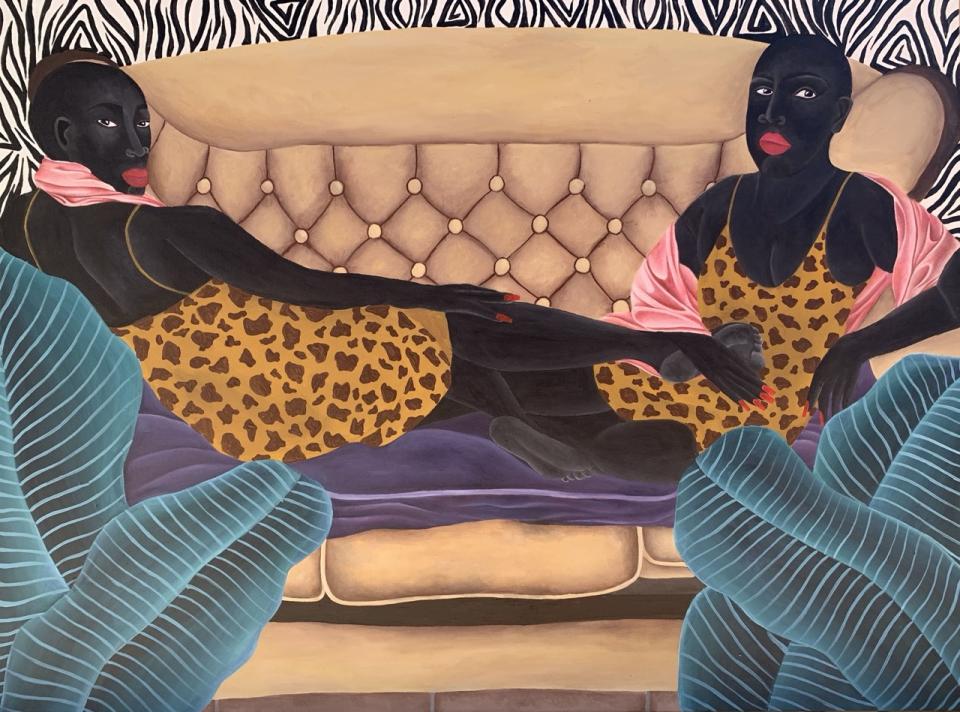
The black art canon
With When We See Us, what primarily springs to mind for Esiri Erheriene Essi is ‘representation’. This is just one of the three large exhibitions on the subject that she has seen in the past decade: about art history, about the black art canon rather than the Euro-American one. As a black female artist from London, she finds this extremely important. As a child, she was unaware of this history, but it will now expand the horizons of future generations. Her advice is to ‘Come and see, and make sure you have a more diverse view of art history. There will always be people and stories that go unnoticed.’
It was not until the 1990s, as Koyo Kouoh knows, that there was a focus on black contemporary art, after a period of intense lobbying: hello, we exist too! In the past ten years, there has been intense focus on the contributions of black people in various social fields. And since 2020, there has been a strong demand for figurative black art. Finally, the conversation can truly begin.
Co-curator Tandazani Dhlakama places the focus on continuity. How does she view When We See Us? ‘I think of a rich historical continuum, of conversations that already commenced decades ago on which we continue to build, of layered history, of a strong black art canon.’ At the exit you are shown a timeline: dates with the most important events in the fields of art, culture and politics. There is also a library, providing the artistic and historical context for the paintings. The chronology stops in 2020. In a remake, 2026 promises to be an important year. Koyo Kouoh was appointed ‘director of the visual art department’ of the Venice Biennale and will take leadership of the 61st edition with aplomb. She is the first African woman ever to be afforded this privilege.
